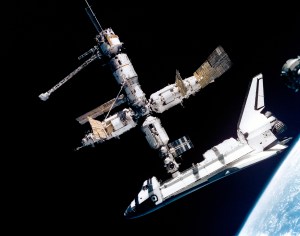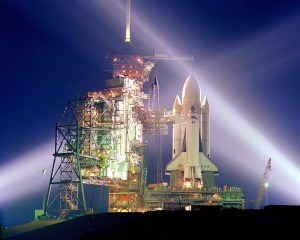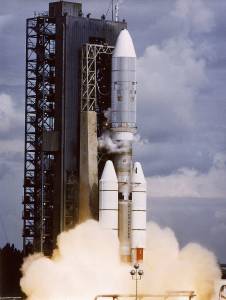Part 6 in Kennedy Space Center’s History series
Building on the accomplishments of the previous decade, Kennedy Space Center entered the 2000s with some challenging goals to achieve. Not the least of these was processing and launching NASA’s space shuttles and completing construction of the International Space Station, as well as managing the agency’s Launch Service Program and its many Earth-observing, scientific and interplanetary missions.
During this decade, Kennedy processed and launched 33 successful space shuttle missions, most of these to the space station, and oversaw a record-setting 53 expendable launch vehicle missions.
Roy D. Bridges, center director from 1997 to 2003, said despite the challenging environment, the Kennedy team delivered excellent results.
In October 2000, the STS-92 mission on Discovery marked the 100th space shuttle mission and also included the 100th spacewalk for the U.S. space program.
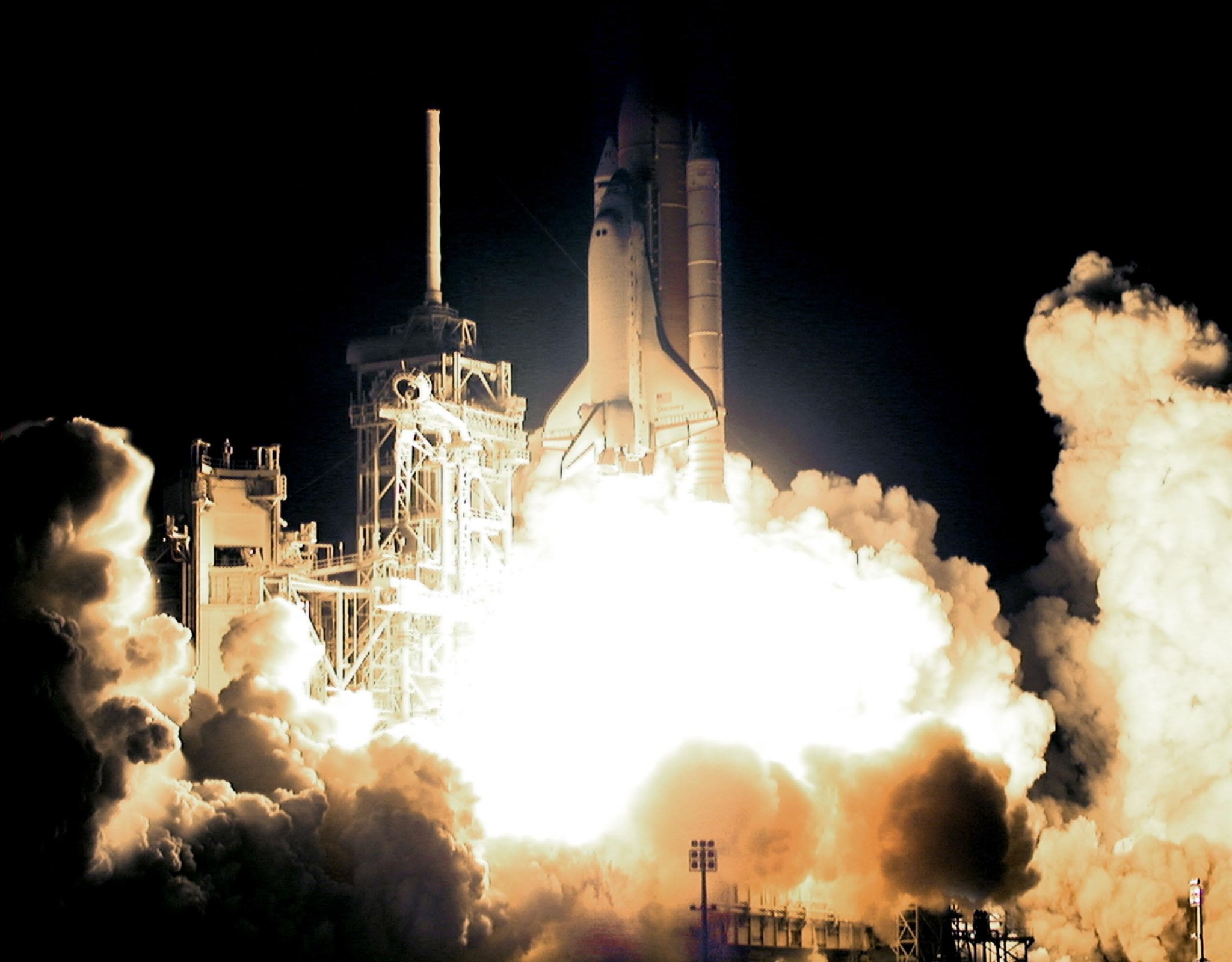
The arrival of the first crew, Expedition 1, to the International Space Station on Nov. 2, 2000, aboard a Soyuz rocket, marked the beginning of an uninterrupted human presence on the orbiting laboratory. A month later, the very first set of solar arrays, the P6 truss, was delivered aboard Endeavour on the STS-97 mission and immediately increased the station’s capabilities.
What followed was more than 10 years of U.S. and international partner element processing in Kennedy’s Space Station Processing Facility (SSPF) and delivery to the station aboard space shuttles.
Russell Romanella was a director of ISS and Payload Processing in the 2000s. “It was an amazing time with the SSPF high bay so full of elements that we had to start using the high bay of the Operations and Checkout Building as overflow,” Romanella said. “During these years, we saw the bay fill up and empty out at least three different times.
“What was most memorable about this time, especially in 2007 and 2008, was the wave of international participation. It wasn’t unusual to have 100 international partners here on any given day.”
"What was most memorable about this time, especially in 2007 and 2008, was the wave of international participation. It wasn't unusual to have 100 international partners here on any given day."

Russell Romanella
Former Director of ISS and Payload Processing
Space shuttles delivered to the station the Destiny Lab, the Quest airlock, the Tranquility node, the cupola, the station’s robotic arm and mobile base system, and all of the starboard and port truss segments and solar arrays. Also, the Japan Aerospace Exploration Agency’s Kibo Laboratory and the European Space Agency’s Columbus module were processed in the SSPF and carried to the station aboard space shuttles.
The first of three multi-purpose logistics modules (MPLMs) built by the Italian Space Agency, Leonardo, was processed and delivered to the station in February 2001 aboard Atlantis on the STS-98 mission.
NASA’s Spitzer Telescope was launched aboard a Delta II rocket on Aug. 25, 2003, from Cape Canaveral Air Force Station (CCAFS) in Florida. Spitzer is the largest infrared telescope ever launched into space and the last of four missions in NASA’s Great Observatories Program.
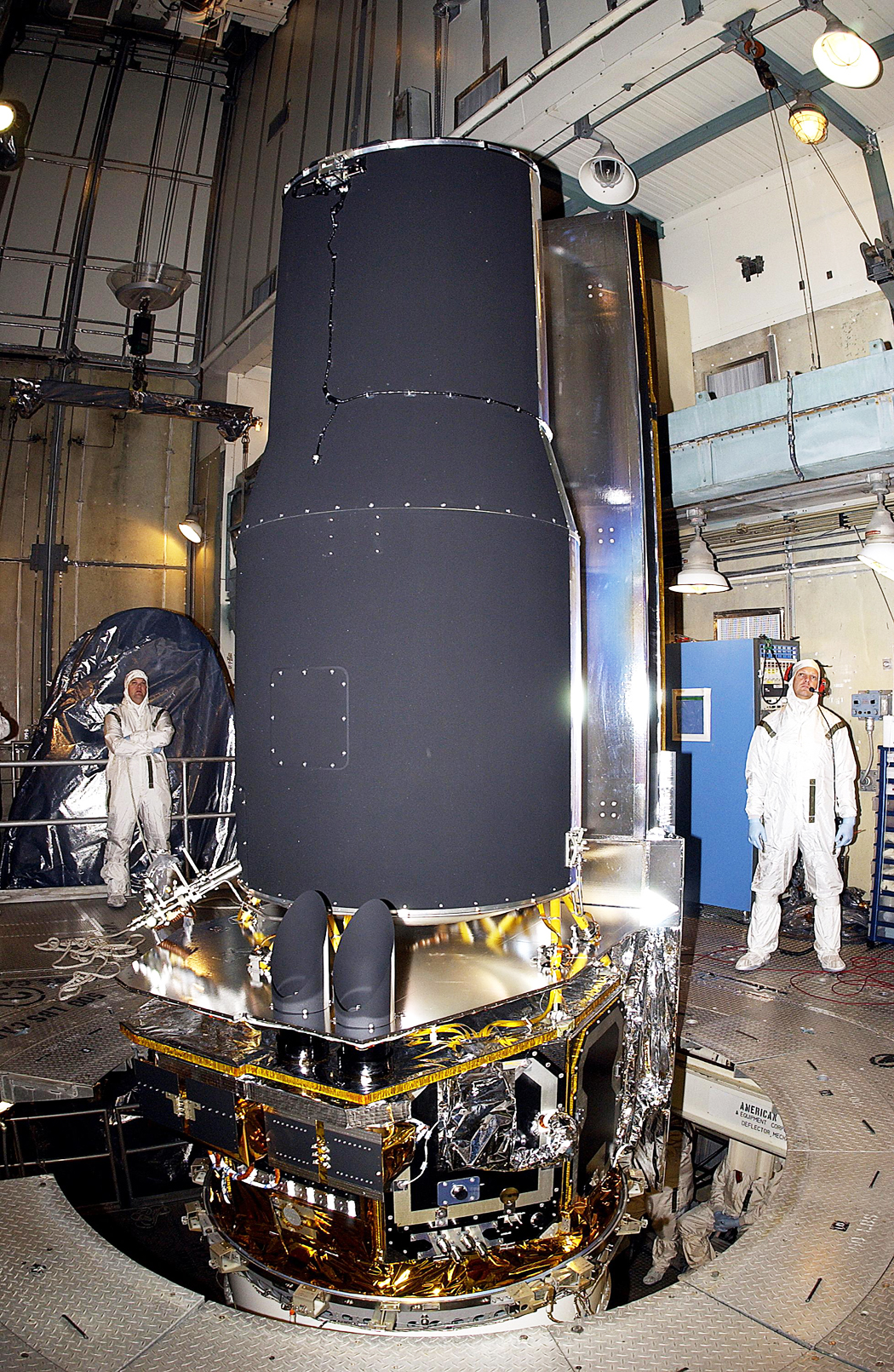
Tragedy struck the Space Shuttle Program for the second time when Columbia and its seven-member crew were lost during re-entry on Feb. 1, 2003, on the STS-107 mission. Lost were Commander Rick Husband; Pilot William “Willie” McCool; Mission Specialists Kalpana Chawla, Laurel Clark and David Brown; Payload Specialist Ilan Ramon, of Israel; and Payload Commander Michael Anderson.
Kennedy helped the agency investigate and determine the cause and made upgrades to the shuttle and external fuel tank so that shuttle launches could resume.
They did so July 26, 2005, when Discovery launched with a seven-member crew on Return to Flight mission STS-114 to the space station. The payload included the MPLM Raffaello, the Orbiter Boom Sensor System (OBSS), and tile and Reinforced carbon-carbon (RCC) sample materials.
Jim Kennedy was center director from August 2003 to January 2007. He said the center and the agency were focused on seeing the space shuttle safety return to flight.
“While this was a great challenge, fraught with problems, the fact that we shared mutual objectives with common goals made it a very doable task,” Kennedy said. “It is a credit to the fine men and women of Kennedy Space Center.”
During a spacewalk, mission specialists demonstrated inspection and repair techniques using the samples. Prior to docking to the station, the crew used the OBSS to inspect and take pictures of the shuttle tiles and RCC panels for analysis back on Earth.
“What was significant during this decade was the ability of the shuttle processing team to work across the program to overcome adversity, including resolution of various ground umbilical hydrogen leaks, external fuel tank stringer crack repairs, engine cutoff sensor resolution, and safely returning to flight following the Columbia tragedy,” said Ground Processing Director Pete Nickolenko.
In 2004, prior to Return to Flight, then President George W. Bush announced the Space Shuttle Program would end in 2010 and the nation’s Vision for Space Exploration would be the next step in U.S. space exploration. A new program, Constellation, would include the Ares I and Ares V launch vehicles and Orion crew exploration vehicle (CEV).
NASA’s Hubble Space Telescope underwent a fourth servicing mission in March 2002, during Columbia’s STS-109 mission, and then a fifth and final servicing mission in May 2009 during Atlantis’ STS-125 mission. All of the new components were processed through Kennedy.
“The last mission was a phenomenal success,” said Bob Cabana, Kennedy center director since 2008. “No robots could have done what the astronauts did to upgrade Hubble during the STS-125 mission.”
In November 2008, the Launch Services Program celebrated its 10-year anniversary at Kennedy, with 55 successful missions under its belt.
Among the most celebrated missions was the Mars Phoenix Lander, which launched Aug. 4, 2007, on a Delta II rocket from Launch Complex 17A at CCAFS. It descended to Mars on May 25, 2008.
Another of NASA’s planetary missions sent two exploration rovers, Spirit and Opportunity, on their travels to Mars, atop Delta II rockets, from CCAFS, June 10, 2003, and July 7, 2003, respectively. Both rovers descended through the Martian atmosphere in January 2004 and began sending back images of the planet’s surface.
Chuck Dovale, deputy director of LSP, has spent all but two of his 30-year career in the program. “The Mars landers still capture the imagination like no other. It’s been extremely gratifying to witness the evolution from Sojourner to Spirit and Opportunity and now to Curiosity,” Dovale said. “To have a hand in processing and launching them on their quests has been a career highlight for me and I’m sure for everyone in LSP.”
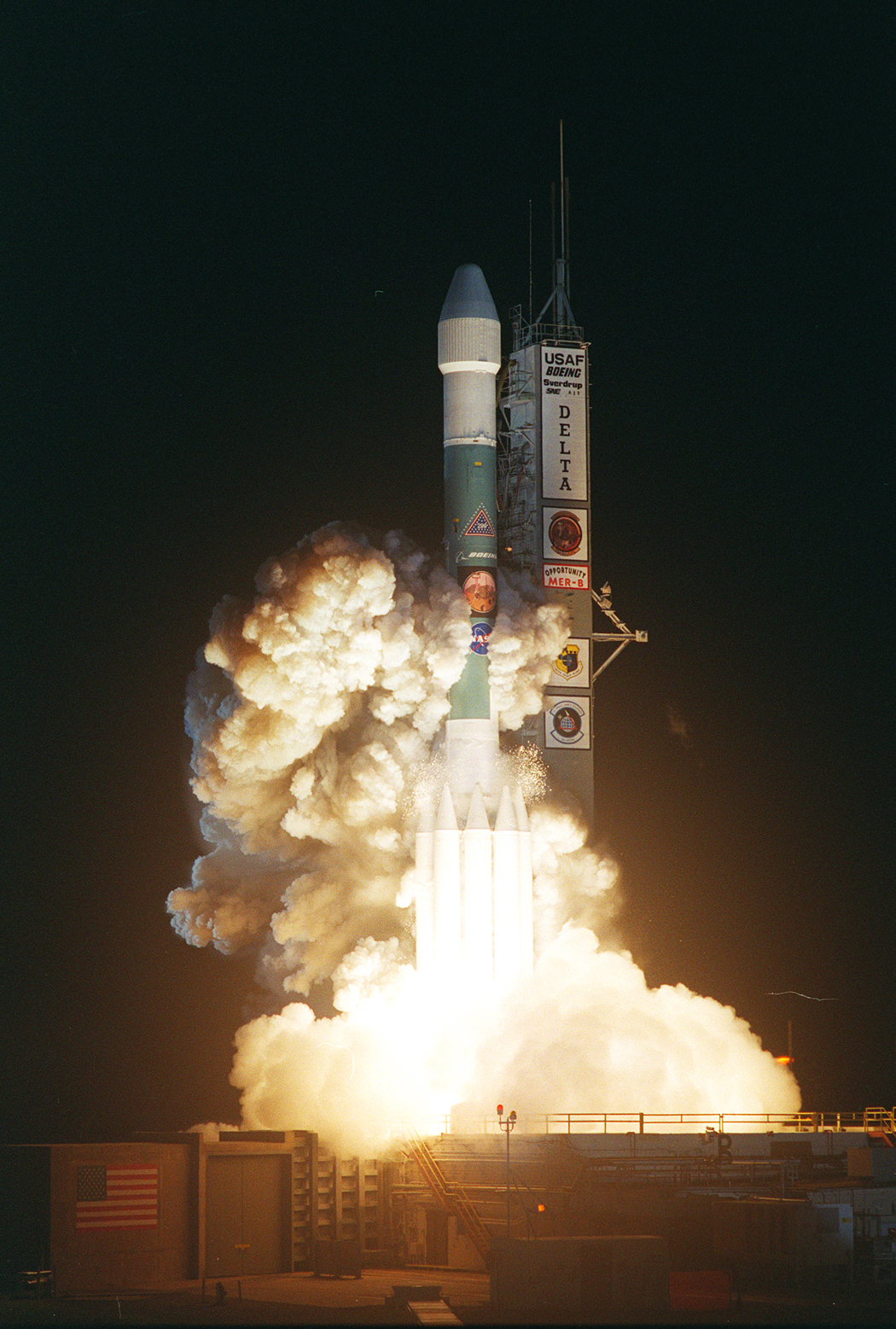
Another LSP mission was a pair of spacecraft called Lunar Reconnaissance Orbiter (LRO) and Lunar Crater Observation and Sensing Satellite (LCROSS). They launched atop an Atlas V rocket from CCAFS on June 18, 2009. It was the first mission back to the moon in 10 years.
“My hope is that LSP remains an integral part of the agency’s plan to build and launch one-of-a-kind scientific spacecraft to help us increase our knowledge about the world and the galaxy in which we live,” Dovale said.
Bill Parsons, who was center director from January 2007 to October 2008, said he would like to see Kennedy processing flight hardware and launching multiple vehicles in the future.
On Oct. 28, 2009, the Ares I-X rocket soared into the sky from Launch Pad 39B on its first flight test. The program was subsequently canceled in 2010, allowing NASA to work with commercial companies for transport to low Earth orbit.
The rocket’s first stage separated from the simulated upper stage, and then slowly splashed down in the Atlantic Ocean for recovery.
As the Space Shuttle Program’s end drew near, the center faced challenging times with the beginning of workforce reductions and a repurposing of facilities and infrastructure to support NASA’s Space Launch System and a variety of commercial launch vehicles into the next decade.
“We are a leader in space exploration,” Cabana said. “We want to maintain our leadership in the world.”

























